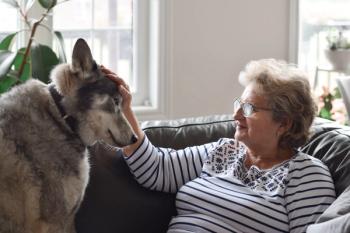
Your time = your money
Want to realize a return on your veterinary school investment? It's as simple as charging for your services-all of them.
To realize the value of one minute, ask a person who just missed the plane. To realize the value of one second, ask a person who survived an accident. To realize the value of one millisecond, ask the person who won a silver medal at the Olympics. So what then is the value of four arduous years of study for a veterinary degree?
The cost of achieving a veterinary degree has been skyrocketing over the last few years. The average debt load for newly graduated veterinarians was about $150,000 in 2012. There are houses you can buy for that price! Yet the average starting salary for graduates was close to $65,000 last year. Remember that these are averages, so some have more debt load and some start with a lower salary. Sadly, once a veterinarian finally graduates and finds a professional position, a huge part of his or her salary goes to repaying debt.
The reality of veterinary debt
This means that new veterinarians find it harder than ever to make ends meet and don't have the financial ability to start or buy into a practice. Based on reports over the last few years, we experience one of the highest debt-to-income ratios compared to our human healthcare peers.
We put a lot of time, trouble and money into our jobs so we can get paid less than a third of what our human medicine counterparts make. We must adore working long, hard hours for so much less than our educational investment would suggest. After sinking about $200,000 into achieving our degree and getting our license, we must learn to be more cognizant of achieving a return on our investment.
Time is a valuable commodity
What we really need is a meter installed in our heads that monitors our most sellable merchandise: our time. We cannot survive by giving it away. Everything we do has a time component and should be sold at an appropriate dollar amount per unit of time.
So who sets the dollar amount for you? Initially, your employer does during your associate days. How does that happen? There are rules to follow and after that, it's simple math.
Let's say you're a salaried veterinary associate working 45 hours a week and being compensated at $80,000 per year. In addition to the $80,000, your employer must add Medicare, FICA and federal unemployment taxes amounting to $6,152, health insurance at a minimum of $8,000 and some kind of pension contribution amounting to about $4,000.
Now we add expenses for personal pet care, association dues, continuing education and medical liability insurance at a very minimum of another $2,000. The total cost has just leaped from $80,000 to $100,000, pretty typical of 20 percent in benefits added to salary. If you work an average of 45 hours a week or 2,250 hours a year, that comes out to an employer's cost of $44.51 for each hour and 74 cents for each minute you are employed.
So how does the practice profit?
But how is the veterinary practice owner going to show a profit for taking you off the unemployment line? He or she cannot sell 100 percent of your time. What about the time you spend getting ready between clients, writing up records and even potty time. Let's face it: Only 60 percent of your time is billable to the clients. Now your 74 cents per minute cost becomes $1.24 per billable minute.
Remember I said that there are rules to follow? Well, this one is incontravertible: No practice can survive if veterinary employment costs exceed 25 percent of total practice expenses. So it follows that per-minute costs must be marked up four times to determine client fees for your service. Now your client must be billed $4.95 for each minute you spend serving his or her needs or the practice loses money.
Calling it simply $5 per minute, a 15-minute exam must produce at least $75 to break even. An hourlong surgery cannot be less than $300 for an $80,000-per-year surgeon's time alone. A $100,000-per-year surgeon's time must be marketed at $6 per minute and $360 per hour. When an associate does a free nail trim that takes just two minutes, the hospital loses at least $10. (Consult the table "Per-minute client costs based on veterinary salaries" to put your own hospital's staff in perspective. Of course, this data doesn't consider the fixed costs of the hospital that must be added in, but that's a different discussion for another day.)
Per-minute client costs based on veterinary salaries
Everyone's time is money
Shall we mention the markup on staff members' time? There's a rule for this as well. Costs for paraprofessional staff—receptionists, technicians and kennel employees—may not exceed 20 percent of practice expenses.
If we add 20 percent for benefits to paraprofessional wages and consider those employees to also be about 60 percent efficient, a $14-per-hour full-time staff member's time must be charged out at $2.33 per minute. A receptionist invoicing a cat toy for $2 and taking two minutes for the process is an invitation to bankruptcy, because time is money and profit is not a town in Serbia. It nauseates me to think of a veterinarian and technician spending an extra three minutes in an exam room trimming a pet's nails and not charging for the service.
Over the career of the average veterinarian, an amount greater than double the total cost of today's veterinary education is given away as free services. I know of no other profession that is as generous to its staff and clients. And while generosity is a noble trait, it's certainly not helping our debt-laden profession one bit.
Dr. Gerald Snyder publishes Veterinary Productivity, a newsletter for practice productivity. He can be reached at 217 Clinton St., Hoboken NJ 07030; (800) 292-7995; or
Newsletter
From exam room tips to practice management insights, get trusted veterinary news delivered straight to your inbox—subscribe to dvm360.




